SLA Printing is an abbreviated way of saying Stereolithography. The method of printing involves hardening layers of liquid resin into a solid using heat. There is a special liquid resin used in the SLA printers that hardens when light hits it, so it is very important to keep light away from the liquid resin.
The original SLA printing was complicated and required a laser that essentially scribed the layer pixel by pixel. For this reason the machines were very large, heavy and expensive as lasers were required, and moving them fast to save time required expensive optics and servo motor systems.
Around 2010 the technology changed radically and introduced the concept of printing the whole layer at one time, by using essentially a “video screen, or a cell phone screen.” The concept is simple really, it is based on LED technology, where the screen is blank most of the time. A strong set of LED lights from underneath the screen shine when the time is ready for curing the layer of material. When the LEDs are turned “on” the LED screen is activated allowing only certain areas on the screen to let light through. The part of the resin that sees light then is hardened.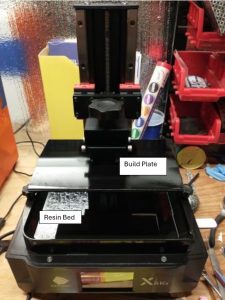
This plate is lowered to within .005 inches from the actual LED Screen. The object is to get the first layer to bond to the plate. The first layers typically are preprogrammed to be longer in duration so that there is ample adhesion to the aluminum plate. Once the first layers are bonded then the printer resumes basic printing.
Basic printing is simple, in that the print head lowers to the screen, adds a layer, then UNSTICKS that layer from the plastic lense sheet (in the resin bed). You will hear a slight unsticking sound every time the head is raised, this is the layer becoming unstuck from the plastic, but staying adhered obviously to the layer that was just built.
The resolution of parts is phenomenal and the parts appear flawless. However, if parts are trying to be made for tight tolerances, great care needs to be made to make sure the part will actually come out ROUND for example (versus oblong or elliptical.)
Like every technology, there is a down side, and that downside is similar to urethane casting, one edge will always be suspect or not optimal. That is because of the support material. If you know this, you can work around the short comings and develop parts that don’t care if one side is less than optimal. Or you can take into account that minor machining may be required to get the part to fit the way it is needed.
An example is of a pilot fixture that is used for keeping a brake drum on the lathe
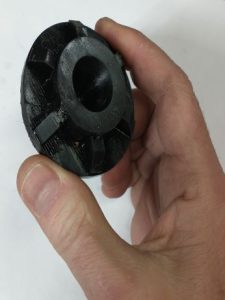 |
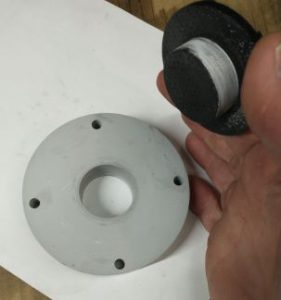 |
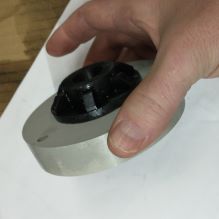 |
during heavy turning operations. The pilot needs to be center onto the fixture with tight tolerances and also, needs to fit into the lathe tail-stock adapter. The part was SLA’d out, however it needed minor turning in the lathe make it fit properly into the adapter.
Another example is an ellbow part that initially was plastic injection molded back in the day. However, the customer wanted an exact duplicate without the extra cost. The 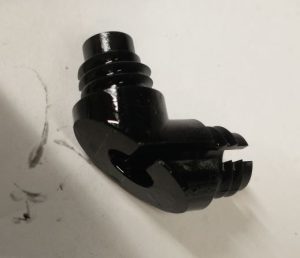
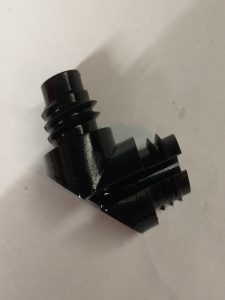
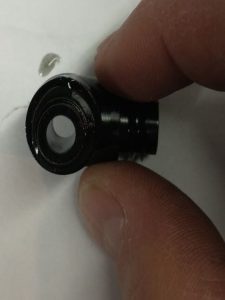 advantage of this part is that is already had a flat spot could be used to mount the starting of the part on the SLA mount plate. Additionally, the angle of 45 degrees is optimal for an overhang that does not need support, so the part came out flawlessly.
advantage of this part is that is already had a flat spot could be used to mount the starting of the part on the SLA mount plate. Additionally, the angle of 45 degrees is optimal for an overhang that does not need support, so the part came out flawlessly.
We here at Prototype Industries use the SLA for making modular molds, especially for roto-molding. On a conventional 3-d printer the line marks are quite prevalent. Also it can take up to 16 hours to print some large parts that are used in the mold. To get conventional 3d printed part to have good tolerances and smooth surfaces a large amount of time is required in sanding, and filling the layers. This method of using the 3d printed parts has been abandoned long ago, in favor of using modular molds.
Essentially what that means is that the mold is made of several parts that are fit together like a puzzle. Some of the larger parts that do not require good surface finish are used in the main body of the mold. However, the areas that do count, like the main part details are made using SLA printed parts.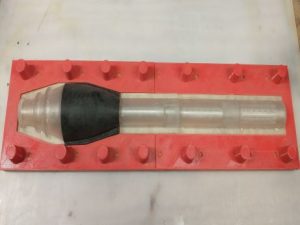
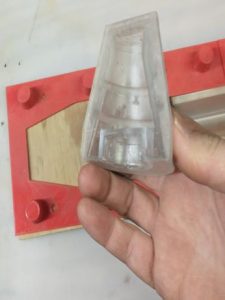
The advantage of doing this method, far outweighs even CNC machining as small, small cutters are required to get the sharp cornered details that the SLA printer readily provides.
We routinely use the SLA printer for short runs, or for tooling and fixtures. The cost and time to make parts is relatively low. The hardest part is to get the parts to print properly and then doing secondary operations.
